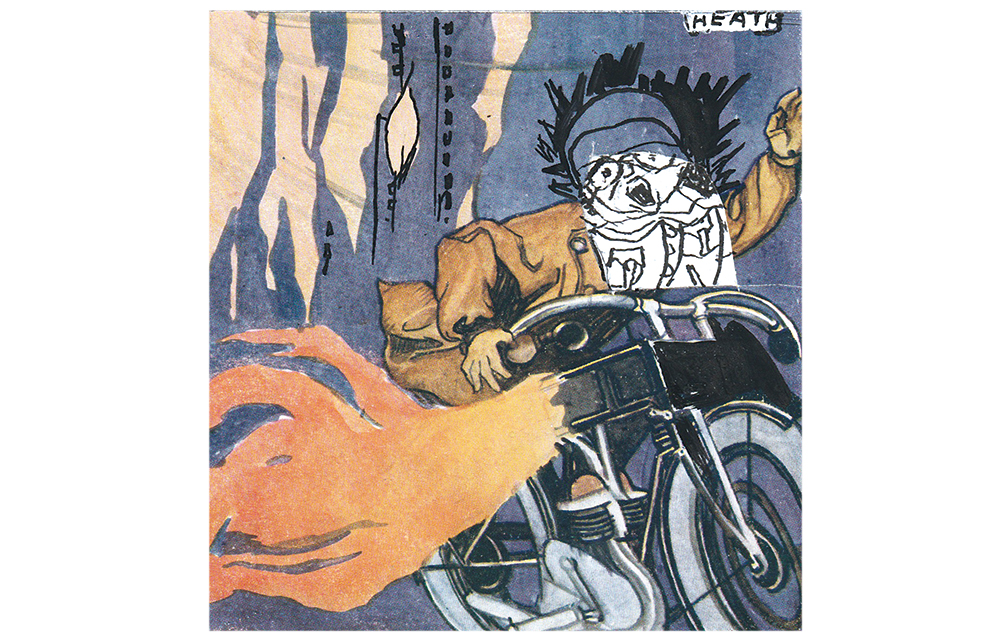Owen Matthews has narrated this article for you to listen to.
Rome and Kyiv have one thing in common – the distinctive whine of motor-scooter engines in the night. The difference is that in Kyiv the high, Vespa-like noise does not rise from the streets but drifts down from among snow-laden clouds. It’s the unmistakable sound made by Iranian-designed Shahed-136 suicide drones, essentially modern-day doodlebugs armed with warheads big enough to collapse a medium-sized building. Kyivans nickname these sky-borne menaces ‘mopeds’.
Shaheds are slow-moving, low altitude and easy to spot, so Russia fires them after dark. With a great deal of noise and spectacular flashes in the night sky, Ukrainian anti-aircraft and Patriot missile batteries usually blow most of them out of the sky as they come in. But Patriot ammo is expensive and becoming increasingly scarce as Kyiv waits for US money to arrive, now that the grim drama of a minority of Republicans blocking military aid has finally been resolved. At the beginning of this latest winter of bombardments, Ukraine’s air defences were downing more than 90 per cent of the missiles and drones. Now, though exact figures are classified, the hit rate has palpably reduced. Last week, more than a dozen people were killed in their beds in Kyiv and residential buildings were reduced to flames and rubble.
Unlike last winter, when the Russians attempted to destroy Ukraine’s electricity infrastructure with precise attacks, the targets this year appear to be no more specific than the civilian-inhabited centres of major cities. Such a shift in strategy is almost as old as air war itself. During the second world war, the US Air Force advocated precision daytime bombing, the less well-equipped Royal Air Force favoured night-time carpet bombing – most famously, of Dresden. In March 1945, frustrated with his bombers’ inability to hit munitions factories in Japan, General Curtis LeMay abandoned his old precision strategy and shifted to low-level carpet bombing with napalm incendiaries. By late summer, LeMay’s B-29 Super fortresses had burned out more than 60 Japanese cities. Vladimir Putin’s generals seem to have made a similar calculation – their answer to Ukraine’s improved air defences has been to abandon all pretence of precision targeting infrastructure.
If Putin’s intention is to break Ukrainians’ morale by bombing them into submission, it’s not working any better than Hitler’s blitz of London or Coventry, Arthur ‘Bomber’ Harris’s destruction of Dresden, or LeMay’s burning of Tokyo. The occasional air raid notwithstanding, Kyiv remains a lively, fun and defiant city. With cheerful Blitz spirit elan, a cocktail bar near the Bessarabian market advertises cocktails ‘powerful as a bomb’. The newest, hipster-designed Ukrainian Armed Forces recruitment posters riff on The Lord of the Rings, depicting a handsome soldier bayoneting a group of screaming orcs. The anonymous author of the Nikolaevsky Vanek Telegram channel reposts the latest data from the Ministry of Defence air-raid warning site in slangy style: ‘Greetings, Kyiv Kids! A gang of mopeds [Shaheds] heading your way from north-easterly direction.’
When the air-raid sirens wail over the city, customers in bars and cafés turn to their phones to check what Vanek has to say. If it’s drones, people assume they’ll be shot down by Kyiv’s air defences and ignore the sirens. If Russian MiGs are spotted, that means hypersonic Kinzhal missiles could be on their way. According to local lore, these hit their targets in 90 seconds, making it already too late to run. Recommended action in both cases – stay put and finish your drink.
By God does the hatred of Russia run deep. After an hour of conversation – in fluent Russian – with a brave and thoughtful journalistic colleague whose anti-corruption investigations got the defence minister of Ukraine sacked over the summer, I ask if he follows the Russian media. ‘Definitely not!’ he replies. ‘The only good Russian is a dead Russian.’ He takes a moment, then corrects himself. ‘What I mean is that there are probably still good Russians. But right now I don’t want to work out who is good and who is bad. I don’t want Russia in my head in any way.’ I ask about the million-odd Russians who have fled the Putin regime. ‘They didn’t stand and fight for their freedom,’ he answers, recalling the events of 2014. ‘We did. We stood for 94 days on the Maidan against the government. We built barricades. One hundred and fifty of us got shot. And we won. But those Russians? They just ran away.’
People are exhausted by the war. Many men are nervous about being drafted in President Volodymyr Zelensky’s new quest to find half a million more soldiers to replace those who have been fighting for two years. More and more medical exemptions are being scrapped, including tuberculosis and heart disease. Several radically unmilitary acquaintances – overweight and heavy-drinking artists and designers in their fifties – have received call-up papers. Even if the US Congress eventually releases another tranche of military aid, Ukraine is running low on the one resource that it will be truly impossible to replace – its soldiers.
But there is no sign that Ukrainians’ spirit is anything close to broken. The main good news my friends share are daily reports of Ukrainian drone strikes deep inside Russia, blowing up oil refineries, arms factories and petrol depots with vast fireballs far more dramatic than anything Russia is managing to inflict. So, Putin, do your worst – Kyiv can take it.







Comments